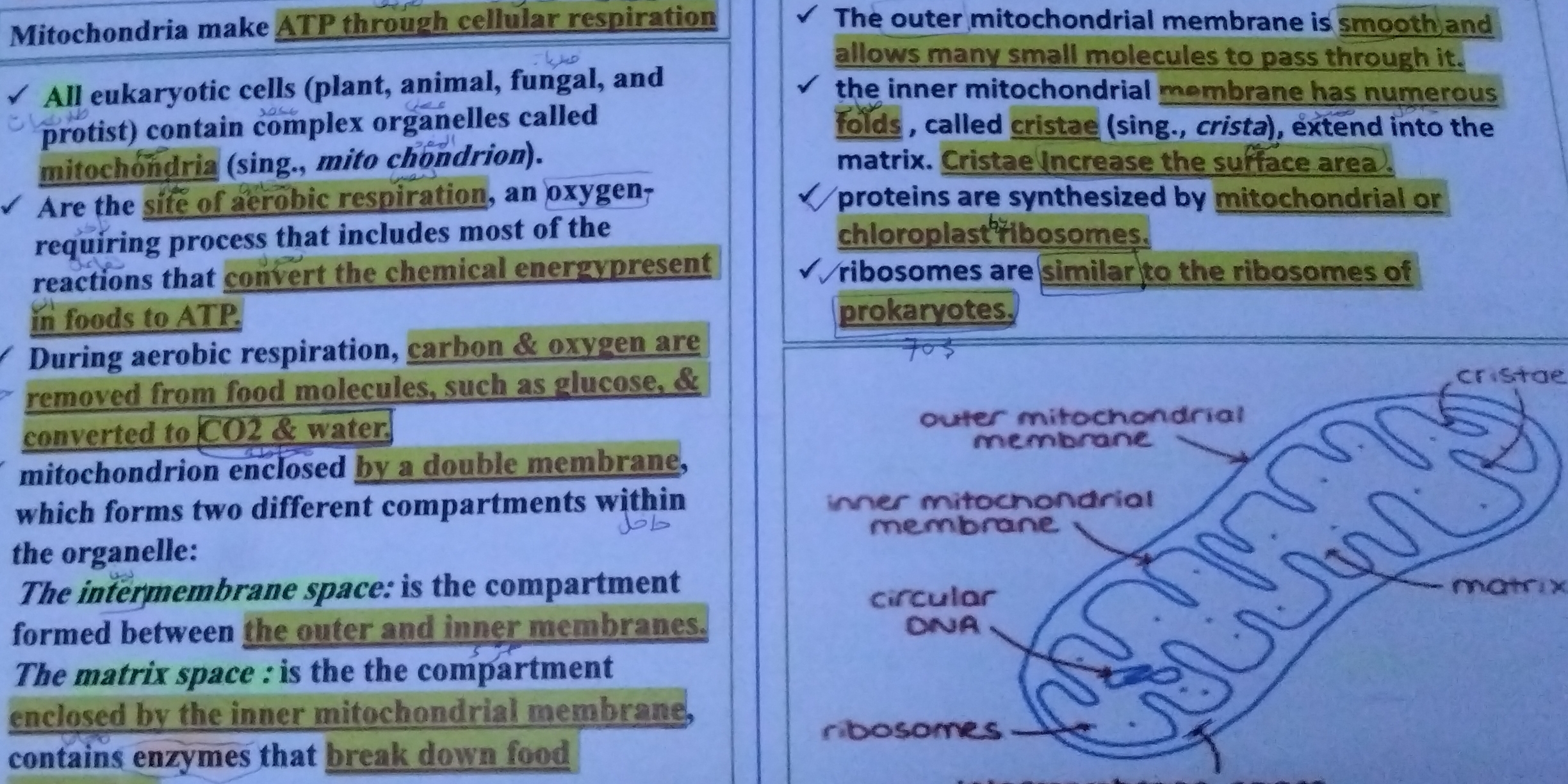What is the role of mitochondria in cellular respiration?

Understand the Problem
The question is asking for information about mitochondria, specifically their role in cellular respiration and structure. It discusses the process of aerobic respiration and how mitochondria convert food molecules into ATP, mentioning important concepts like the structure and compartments of mitochondria.
Answer
Mitochondria produce ATP through cellular respiration, converting chemical energy into usable form.
Mitochondria are organelles responsible for the production of ATP through cellular respiration, primarily through the process of oxidative phosphorylation. They convert chemical energy from glucose into ATP in the presence of oxygen, and are enclosed by a double membrane with an inner membrane that has folds called cristae.
Answer for screen readers
Mitochondria are organelles responsible for the production of ATP through cellular respiration, primarily through the process of oxidative phosphorylation. They convert chemical energy from glucose into ATP in the presence of oxygen, and are enclosed by a double membrane with an inner membrane that has folds called cristae.
More Information
Mitochondria are often referred to as the 'powerhouse of the cell' because they generate most of the cell's supply of ATP, which is used as a source of chemical energy.
Tips
A common mistake is confusing the inner and outer membranes and their functions.
Sources
AI-generated content may contain errors. Please verify critical information